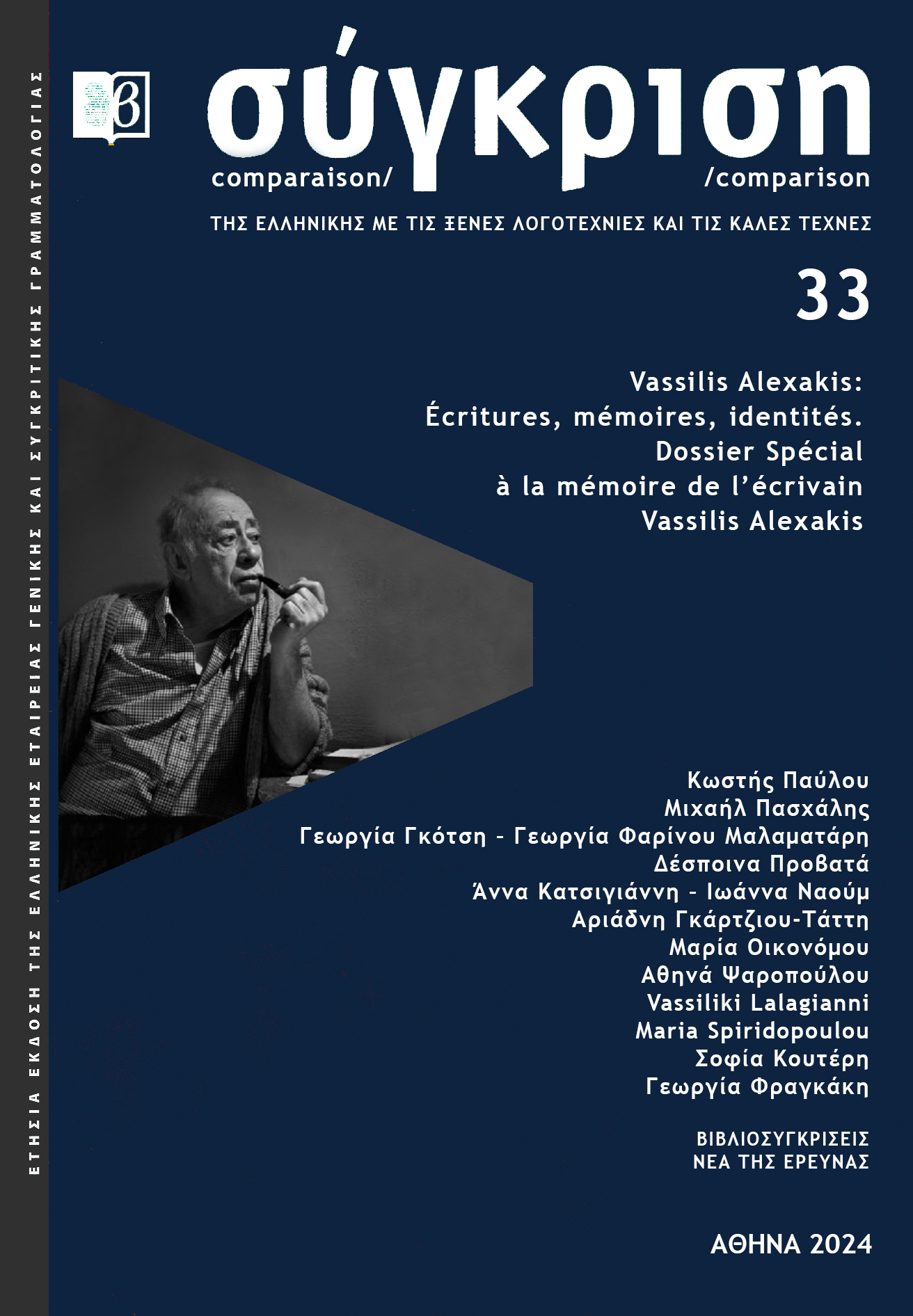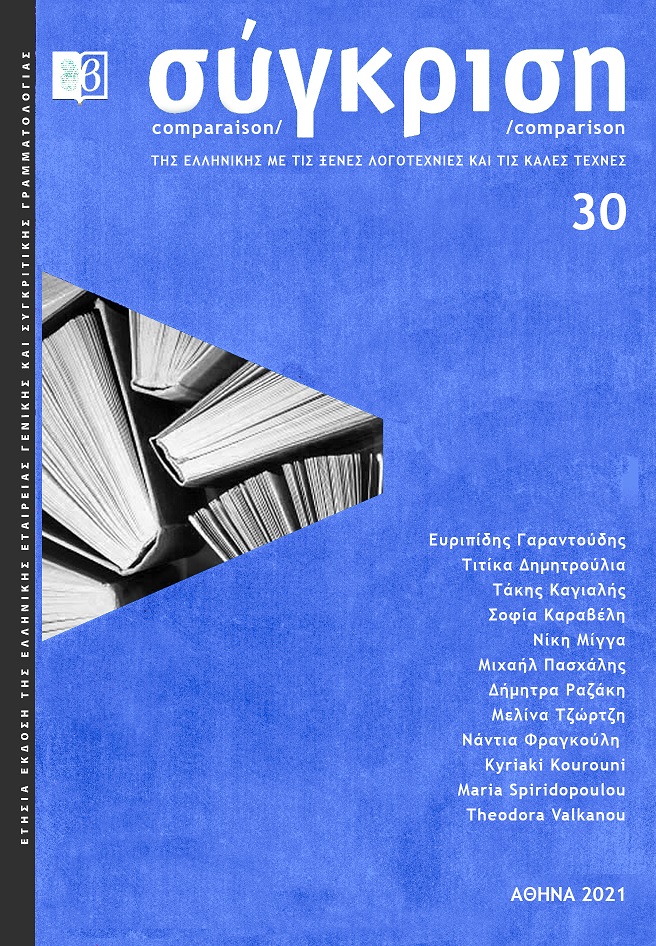Η αληθοφάνεια των αγαλμάτων και το νόημα της Γυφτοπούλας του Α. Παπαδιαμάντη
Περίληψη
Plethon’s lifelike statues and the meaning of Papadiamantis’ The Gypsy Girl
The description (ekphrasis) of the divine statues in Plethon’s cave conforms to the strict rhetorical rules of the Second Sophistic. It specifically distinguishes the statue from the divinity itself and uses lifelikeness formulas to portray motion. This sort of description presupposes rhetorical education and is undertaken by the narrator who speaks now in the name of a “perceptive observer” (the equivalent of ancient ἐξηγητής) and now in Plethon’s name. The distinction between the lifeless and the lifelike statue is crucial for comprehending the meaning of The Gypsy Girl. The above-mentioned ekphrastic technique involves a deeper distinction between seeming and being, between the ancient gods as lifeless creations and the gods as constructions standing for Plethon’s project to revive ancient religion. The earthquake that strikes the cave at the closure of the novel marks the destruction of idols, precisely because their motion ceases to be virtual and becomes real (a “dance” according to the narrator; cf. the statue of Apollo raising his leg and giving the impression that the lifeless god is about to dance).
Λεπτομέρειες άρθρου
- Πώς να δημιουργήσετε Αναφορές
-
Πασχάλης Μ. (2025). Η αληθοφάνεια των αγαλμάτων και το νόημα της Γυφτοπούλας του Α. Παπαδιαμάντη. Σύγκριση/Comparaison/Comparison, (33), 174–192. ανακτήθηκε από https://ejournals.epublishing.ekt.gr/index.php/sygkrisi/article/view/37464
- Τεύχος
- Αρ. 33 (2024)
- Ενότητα
- Άρθρα

Αυτή η εργασία είναι αδειοδοτημένη υπό το CC Αναφορά Δημιουργού – Μη Εμπορική Χρήση – Παρόμοια Διανομή 4.0.
Οι συγγραφείς των άρθρων που δημοσιεύονται στο περιοδικό Σύγκριση διατηρούν τα δικαιώματα πνευματικής ιδιοκτησίας επί των άρθρων τους, δίνοντας στο περιοδικό το δικαίωμα της πρώτης δημοσίευσης. Άρθρα που δημοσιεύονται στο περιοδικό Σύγκριση διατίθενται με άδεια Creative Commons 4.0 και σύμφωνα με την άδεια μπορούν να χρησιμοποιούνται ελεύθερα, με αναφορά στο/στη συγγραφέα και στην πρώτη δημοσίευση για μη κερδοσκοπικούς σκοπούς και με δικαίωμα τροποποίησης μόνον με παρόμοια διανομή (αν αναμείξετε, τροποποιήσετε, ή δημιουργήσετε πάνω στο υλικό, πρέπει να διανείμετε τις δικές σας συνεισφορές υπό την ίδια άδεια όπως και το πρωτότυπο).






